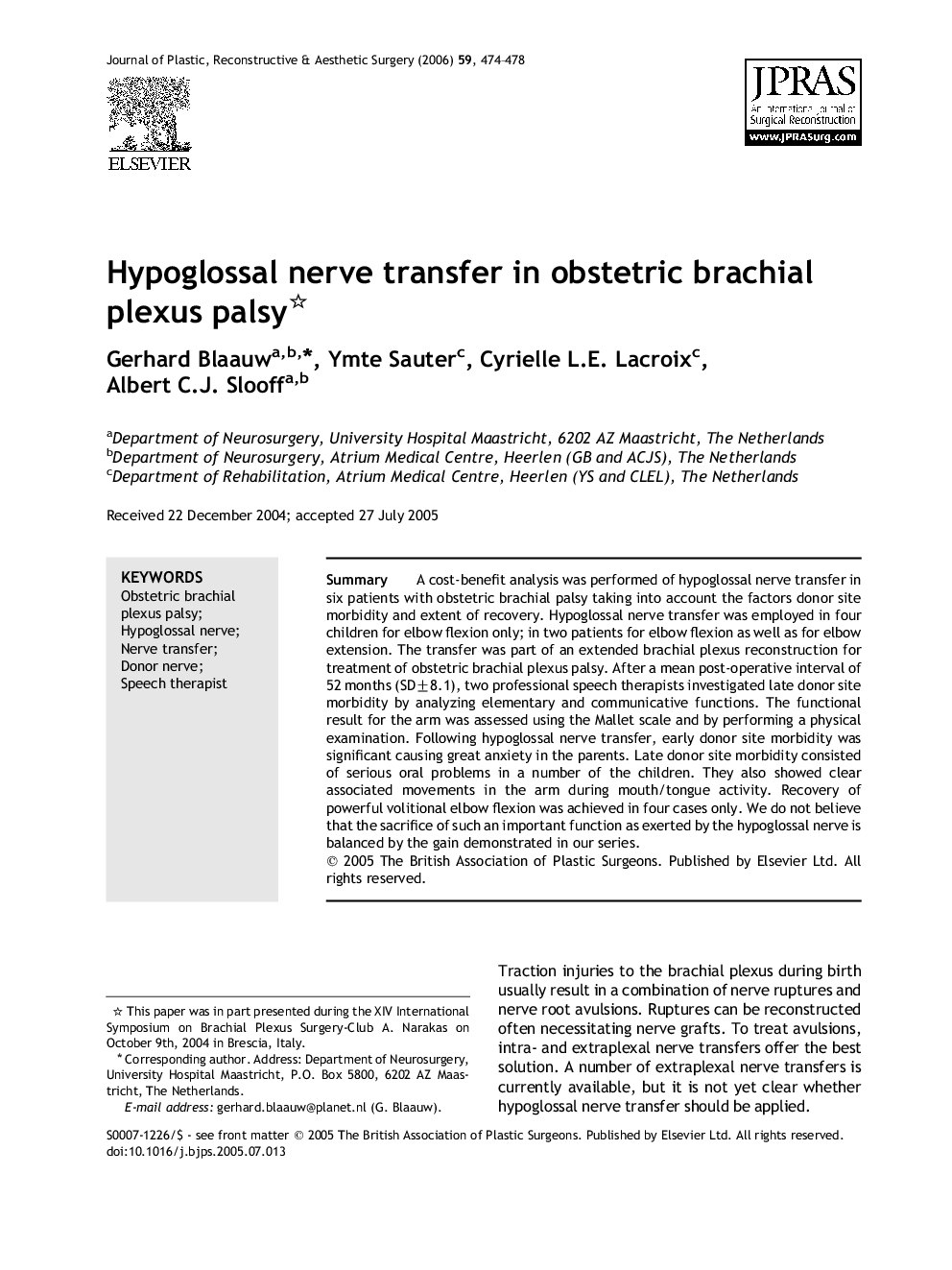| Article ID | Journal | Published Year | Pages | File Type |
|---|---|---|---|---|
| 4121875 | Journal of Plastic, Reconstructive & Aesthetic Surgery | 2006 | 5 Pages |
Abstract
A cost-benefit analysis was performed of hypoglossal nerve transfer in six patients with obstetric brachial palsy taking into account the factors donor site morbidity and extent of recovery. Hypoglossal nerve transfer was employed in four children for elbow flexion only; in two patients for elbow flexion as well as for elbow extension. The transfer was part of an extended brachial plexus reconstruction for treatment of obstetric brachial plexus palsy. After a mean post-operative interval of 52 months (SD±8.1), two professional speech therapists investigated late donor site morbidity by analyzing elementary and communicative functions. The functional result for the arm was assessed using the Mallet scale and by performing a physical examination. Following hypoglossal nerve transfer, early donor site morbidity was significant causing great anxiety in the parents. Late donor site morbidity consisted of serious oral problems in a number of the children. They also showed clear associated movements in the arm during mouth/tongue activity. Recovery of powerful volitional elbow flexion was achieved in four cases only. We do not believe that the sacrifice of such an important function as exerted by the hypoglossal nerve is balanced by the gain demonstrated in our series.
Related Topics
Health Sciences
Medicine and Dentistry
Otorhinolaryngology and Facial Plastic Surgery
Authors
Gerhard Blaauw, Ymte Sauter, Cyrielle L.E. Lacroix, Albert C.J. Slooff,
